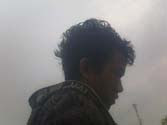Lake Toba






Geology
The Toba caldera complex in Northern Sumatra, Indonesia consists of four overlapping volcanic craters that adjoin the Sumatran "volcanic front". The youngest and fourth caldera is the world’s largest Quarternary caldera (100 by 30 kilometers) and intercepts the three older calderas. An estimate of 2500-3000 cubic kilometers of dense-rock equivalent pyroclastic material, nicknamed the Youngest Toba tuff, was blasted from the youngest caldera during one of the largest single eruptions in geologic history. Following the "Youngest Toba tuff eruption", a typical resurgent dome formed within the new caldera, joining two half-domes separated by a longitudinal graben.
People
Most of the people who live around Lake Toba are ethnically Bataks. Traditional Batak houses are noted for their distinctive roofs (which curve upwards at each end, as a boat's hull does) and their colorful decor.
Flora and fauna
Lake Toba offers a nurturing environment for fish such as the tilapia mossambica, aplocheilus pachax, lebistes reticulatus, osphronemus goramy, trichogaster trichopterus, channa striata, chana gachua, clarias batrachus, clarias nieuhofi, clarias. sp., nemachilus fasciatus, cyprinus carpio, puntius javanicus, puntius binotatus, osteochilus nasselti, lissochilus sp., labeobarbus sora, and rasbora sp.
Many other types of plants and animals live within the boundaries of Lake Toba. Flora organisms include various types of phytoplankton, emerged macrophytes, floating macrophytes, and submerged macrophytes. Fauna include several variations of zooplankton and benthos.
source : http://tourismlaketoba.blogspot.com/




0 komentar:
Posting Komentar